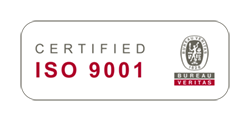- Solutions
- Innovation
- Software
Get Aimsun Next
Use Aimsun Next
About Aimsun Next
- About
Digital twin automates bus reliability for Tees Valley
February 19th, 2024




Tees Valley Combined Authority has selected Aimsun and Yunex Traffic to provide a traffic digital twin with the aim of improving bus service reliability and wider traffic management across their transport network.
In an industry first, the digital twin will use simulation and data analytics to predict future network conditions, allowing traffic management actions to be implemented either automatically or with a human user in the loop.
The digital twin’s machine learning algorithms will enable the Tees Valley traffic management team to continually monitor and evaluate real-time traffic, bus, and signal data feeds across the entire transport network. The Tees Valley digital twin uses data from the already installed and operational Stratos and UTC-UX traffic management systems from Yunex Traffic. This real-time data will now be integrated with the Aimsun Live predictive decision support system in a single, powerful digital twin platform.
Within just a few minutes of receiving the data, the digital twin will provide comprehensive predictions and assessments of near-real-time and upcoming traffic states, up to 60 minutes into the future. This predictive element allows for a far more proactive approach to traffic management: the system will not only get late buses back on time but will also identify buses that look likely to fall behind schedule soon and help them get back on track before the delay even occurs.
The Tees Valley digital twin will benefit multiple stakeholders, including transport planners, traffic managers, bus operators, environmental officers, and data providers.

“The immediate benefits are clear. Not only will an automated digital twin bring cost savings from reduced staffing of existing systems, but it will also help us to implement the best strategies to reduce congestion and emissions. Looking ahead, this digital twin will grow with us to provide a future-proof platform for testing a broad range of innovative mobility solutions.”
Andrea Reacroft
Digital Transport Programme Delivery Manager at Tees Valley Combined Authority
Aside from automation, another significant differentiator between the Tees Valley digital twin versus traditional bus priority techniques, is its holistic approach: rather than focusing on individual late buses, the digital twin enables reliability improvements at the level of the entire corridor. The traditional method of responding to alerts from individual late buses and giving them priority can frequently have a negative impact on the rest of the network, creating a knock-on domino effect of delays; in contrast, having current and future situational awareness across the wider network can keep everyone in the corridor moving.

